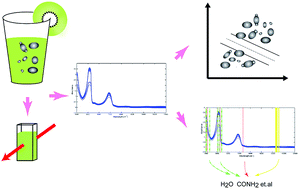Recognition of osmotolerant yeast spoilage in kiwi juices by near-infrared spectroscopy coupled with chemometrics and wavelength selection
Abstract
The recognition of food spoilage by osmotolerant yeast is important in food safety surveillance. In the study, Fourier transform near-infrared spectroscopy was employed for acquisition of five osmotolerant yeast (Hanseniaspora uvarum, Candida tropicalis, Candida intermedia, Meyerozyma guilliermondii and Saccharomyces cerevisiae) contaminated kiwi juice spectra. Support Vector Machine (SVM) recognition models were built with Direct Orthogonal Signal Correction processed full range wavelength spectra or Competitive Adaptive Reweighted Sampling (CARS) selected wavelength spectra. Grid search, Particle Swarm Optimization and Genetic Algorithm were employed for SVM parameter optimization to improve model performance. The overall correct rate was 100% for single strain recognition and 98.8% for yeast cocktail recognition both by employing the full and CARS selected wavelengths. Analysis on CARS selected wavelengths inferred that amide bond containing compounds (5068, 5064, 5207, 5076 and 5072 cm−1) and water (5277 and 5412 cm−1) may be relevant in discriminating kiwi juice spoiled by different yeasts. The method provides a fast, simple and high-throughput method for yeast spoilage recognition, which can be applied in monitoring osmotolerant yeast spoilage.

- This article is part of the themed collection: Editors' collection: Food Engineering, Science, Technology, and Nutrition


 Please wait while we load your content...
Please wait while we load your content...